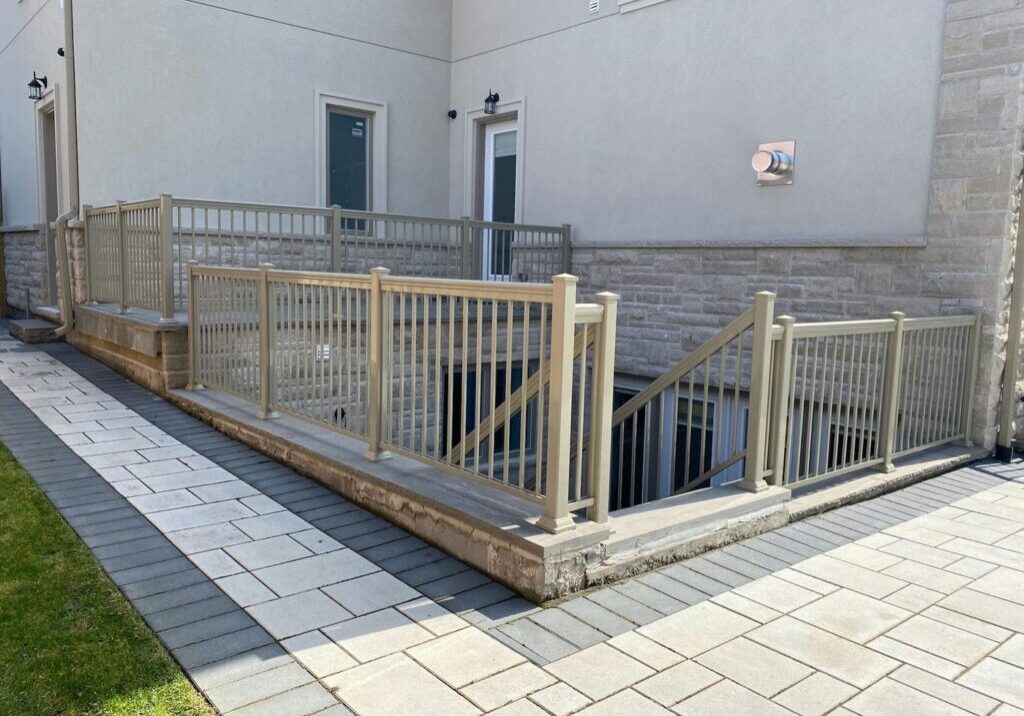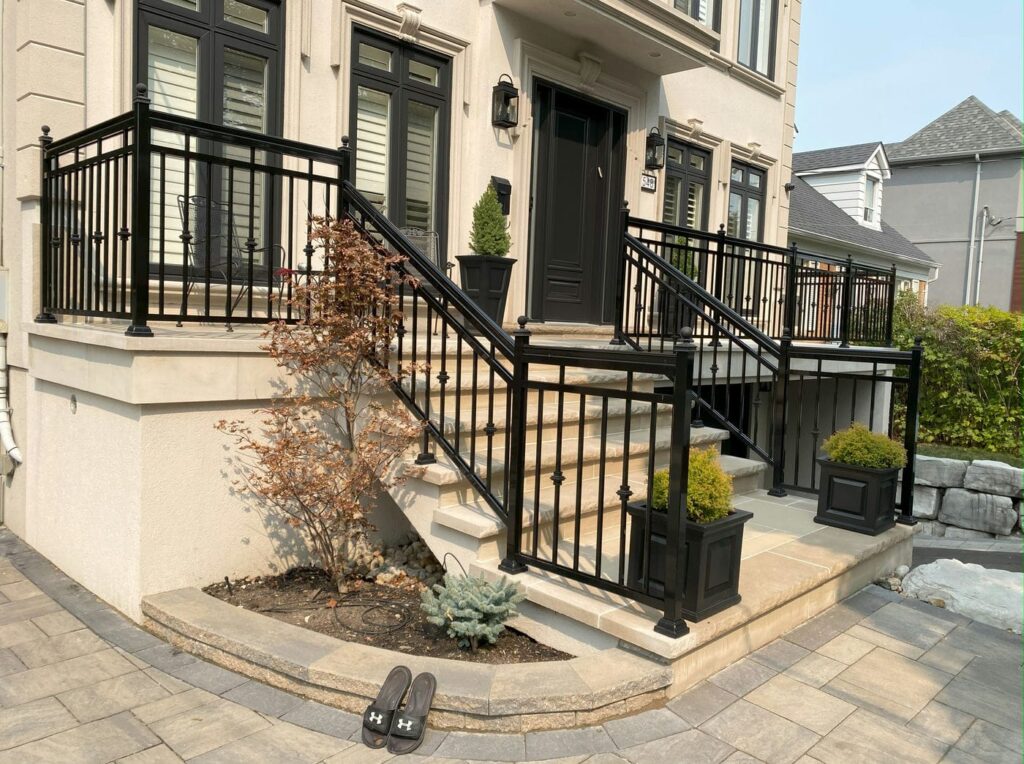
Have you ever wondered what makes the perfect material for constructing durable, stylish railings? Amidst a variety of materials available, aluminum emerges as a clear frontrunner. Renowned for its remarkable combination of strength, elegance, and versatility, aluminum railings have gained immense popularity in both residential and commercial structures. This article delves into the numerous reasons why aluminum stands as the optimal choice for railings, surpassing its competitors in nearly every aspect.
Historical Context
The history of railing materials has evolved significantly, from wrought iron in the 17th century to modern-day synthetics. Aluminum, a relatively latecomer, began its journey in the construction world in the early 20th century. Its introduction marked a significant shift in material preference due to its unique properties, which have only been improved upon over time.
Physical and Chemical Properties of Aluminum
Aluminum is distinguished by its unique combination of lightness and strength, a result of its low density and strong atomic bonds. This metal, about one-third the weight of steel or copper, facilitates ease in handling and installation, making it a preferred choice for railing construction. Despite its lightweight nature, aluminum’s strength is considerable, especially when alloyed with elements like silicon or magnesium, enhancing its suitability for both residential and commercial railings.
The chemical properties of aluminum also contribute significantly to its widespread use in railings. Notably, aluminum forms a protective oxide layer when exposed to air, granting it exceptional resistance to corrosion. This natural barrier ensures longevity and durability, particularly in outdoor or marine environments where exposure to moisture and air could degrade other materials. Additionally, aluminum’s non-toxicity and non-magnetic nature make it safe and versatile for various applications, from homes to industrial settings.

Advantages in Different Settings
Aluminum offers an exceptional balance of strength, beauty, and durability, making it highly sought after in a variety of settings. From the sleek railings in modern homes to the sturdy barriers in industrial sites, aluminum’s unique properties cater to diverse needs and preferences.
Residential Use
In homes, aluminum railings are a synonym for both safety and style. Their lightweight nature simplifies installation, allowing homeowners to effortlessly enhance their decks, balconies, or staircases. Beyond just their sleek, modern look, these railings are child-friendly with no risk of splinters, unlike wood, and no sharp edges, often found in steel counterparts. Aluminum’s resistance to weather elements means it withstands sun, rain, and snow, maintaining its appearance without the need for frequent repainting or sealing. This durability ensures a long-lasting aesthetic appeal, making them a practical choice for any residence.
Commercial Use
For commercial properties like office buildings, shopping centers, and public spaces, aluminum railings offer a blend of elegance and robust functionality. Their ability to withstand heavy usage and high traffic without significant wear and tear is a major advantage. In terms of design, the malleability of aluminum allows for custom shapes and sizes, accommodating the unique architectural styles of commercial buildings. Moreover, the low maintenance requirement of aluminum railings is particularly beneficial in commercial settings, reducing the overall maintenance costs and manpower needed for upkeep.
Industrial Use
In industrial environments, where safety and durability are paramount, aluminum railings excel. They are capable of withstanding intense conditions, such as exposure to chemicals and extreme temperatures, without compromising their structural integrity. This resilience is essential for ensuring the safety of workers in factories, warehouses, and other industrial settings. Additionally, aluminum railings can be designed to meet specific safety regulations and standards, providing reliable protection against accidents. Their lightweight nature also allows for easier and more cost-effective transportation and installation in large industrial complexes.
Public and Outdoor Spaces
In parks, bridges, and public transit systems, aluminum railings are increasingly becoming the go-to choice. Their corrosion-resistant property is particularly beneficial in outdoor settings, where railings are constantly exposed to the elements. This ensures that public investments remain visually appealing and safe for an extended period, without the need for frequent replacements. Aluminum railings also contribute to public safety, offering sturdy support and preventing accidents in high-traffic areas.
Maintenance and Lifespan
Aluminum railings are renowned for their minimal maintenance requirements and exceptional longevity, distinguishing them from other materials like wood or steel. The secret to their durability lies in aluminum’s natural resistance to corrosion. Unlike iron or steel, which can rust, or wood, which may require regular staining or can rot, aluminum maintains its integrity and appearance over time.
For upkeep, simple routine cleaning with soap and water suffices, a task that is notably less demanding than the maintenance required for other materials. This ease of maintenance is particularly valuable in settings with extensive installations, where complex care routines can be impractical and costly.
In terms of lifespan, aluminum railings are designed to last. Their ability to withstand various weather conditions, from intense sun to heavy snow, ensures they remain functional and aesthetically pleasing for years, often outliving alternatives. This extended lifespan not only attests to aluminum’s robustness but also translates to cost-effectiveness. With less need for repairs or replacements, the long-term savings make aluminum railings a wise investment for any project.

Customization and Aesthetics
Aluminum’s versatility in design allows for extensive customization, catering to diverse architectural styles. Its sleek and modern appearance provides an aesthetic advantage, enhancing the overall look of any structure it adorns.
Cost-Effectiveness
While the initial cost of aluminum railings can be higher than some alternatives, the long-term savings in maintenance and replacement costs make it an economically wise choice. This cost-effectiveness, coupled with its durability and aesthetic appeal, positions aluminum as an outstanding material for railings.
Conclusion
Aluminum railings, with their unique blend of durability, style, and practicality, offer an unparalleled choice for anyone looking to combine functionality with aesthetic appeal. Their adaptability across different environments, coupled with their environmental and economic benefits, underscores why aluminum is the best material for railings.
Are You in the Market for Custom Aluminum Railings?
Consider aluminum for your next railing project and experience the blend of beauty, strength, and longevity it offers. For more information and to explore design options, reach out to local aluminum railings experts at GTA Railings.